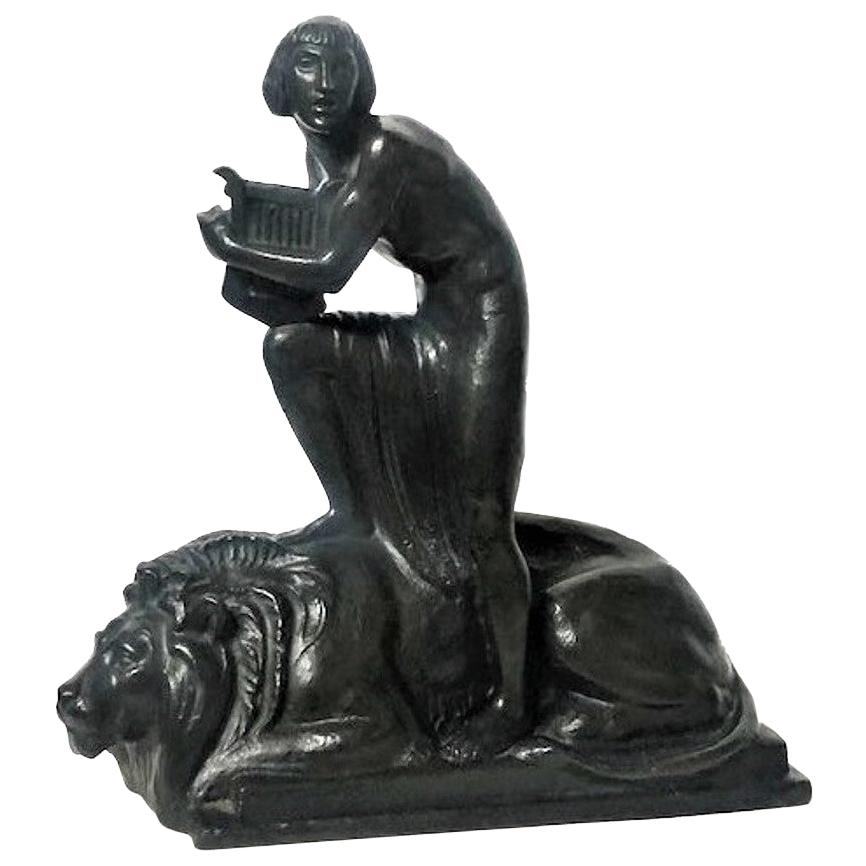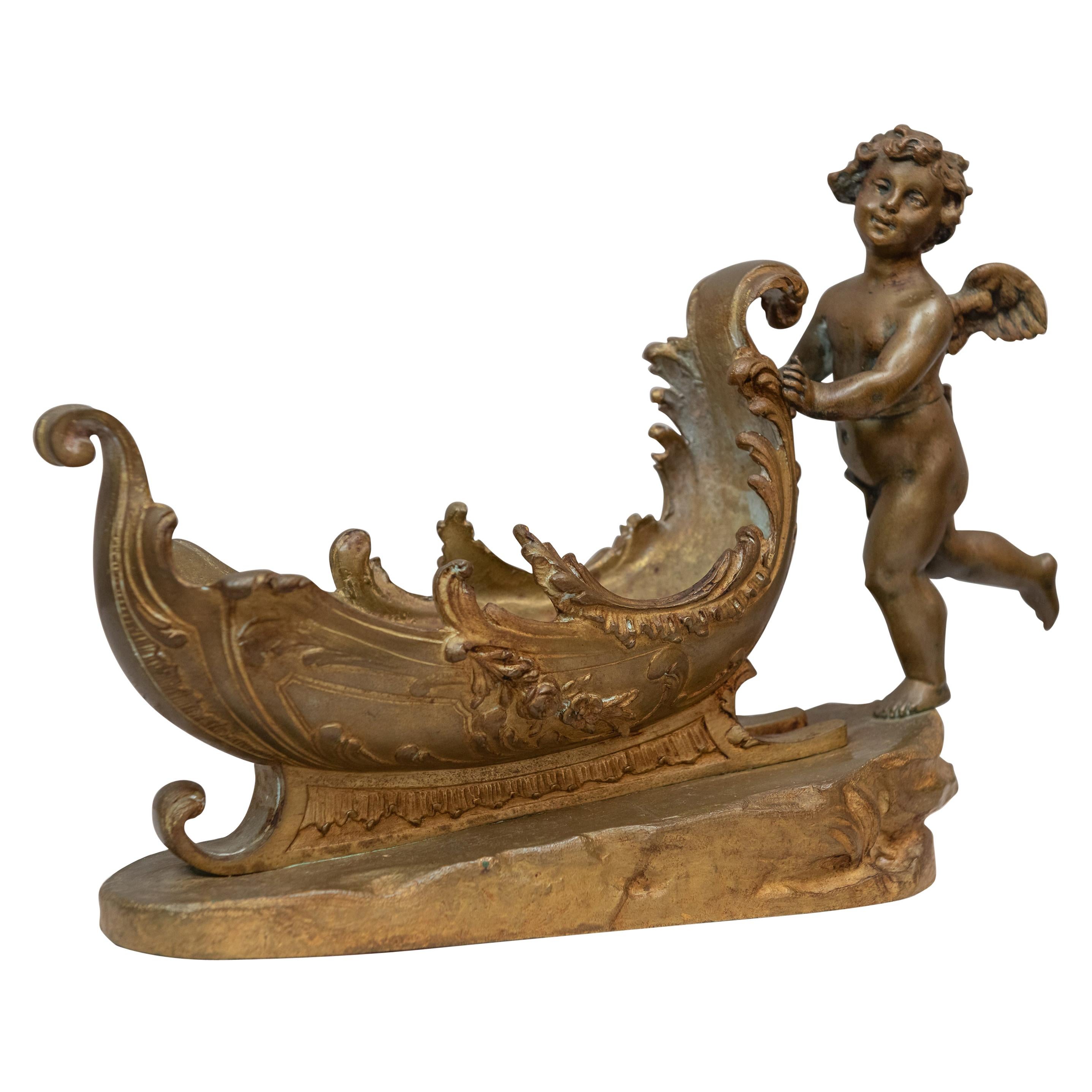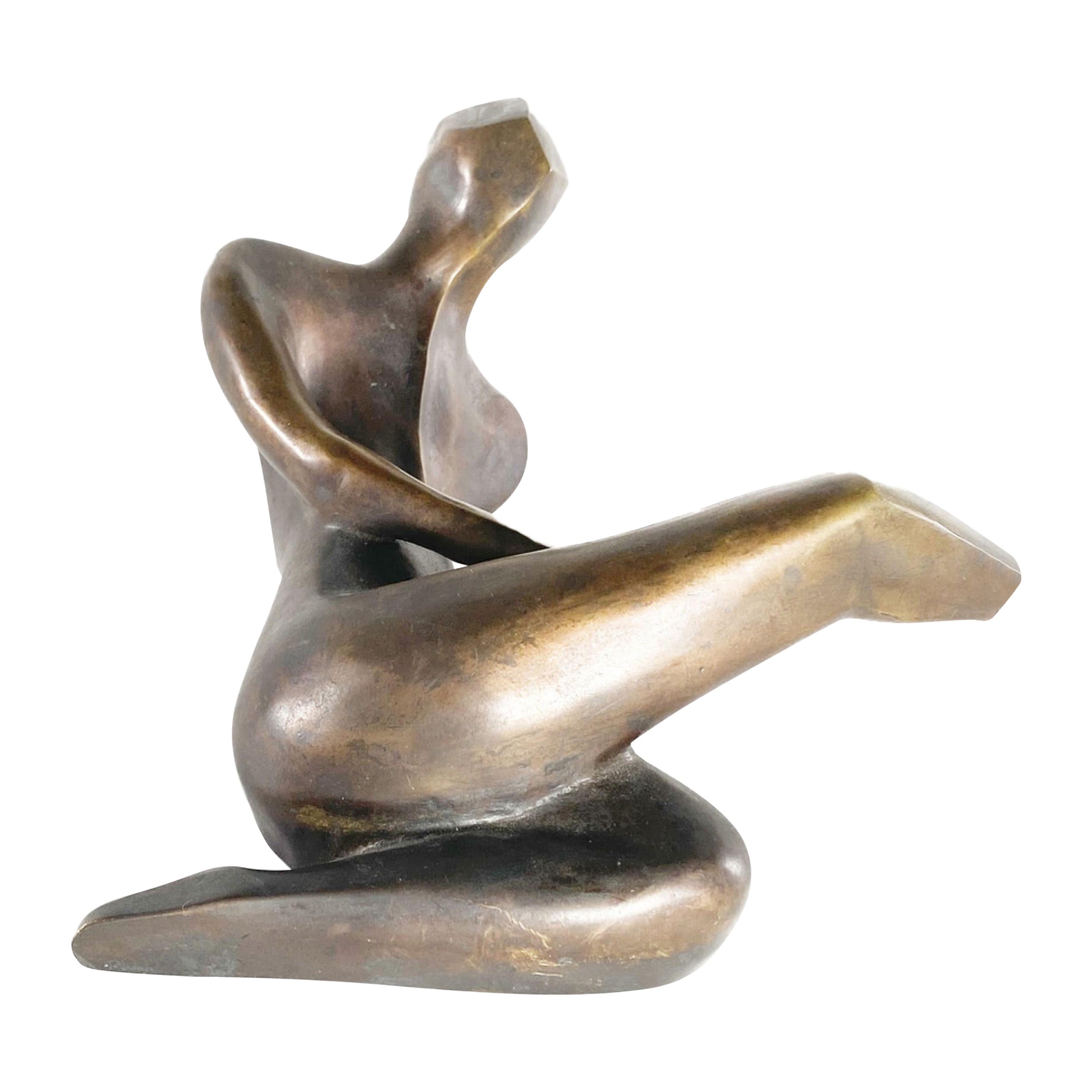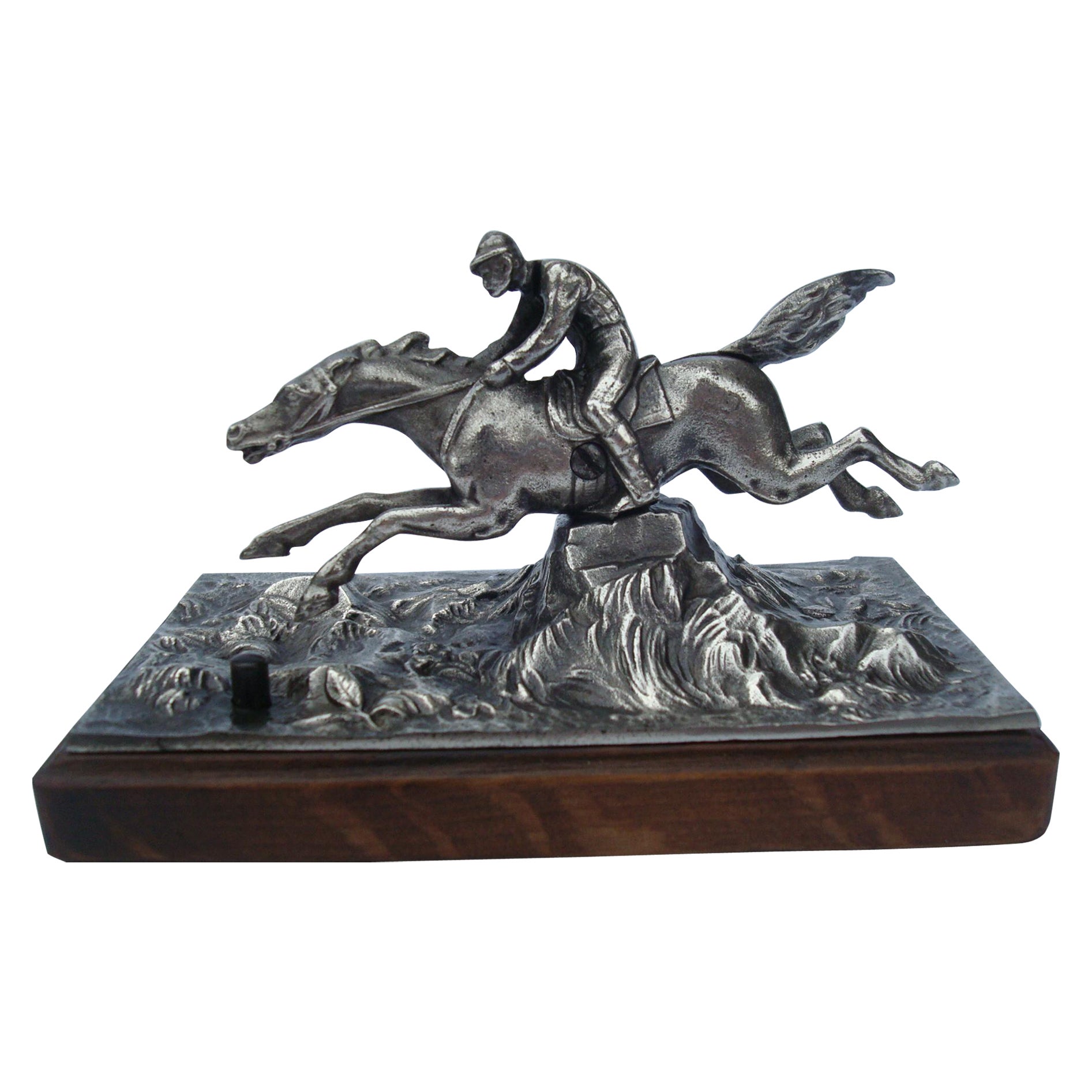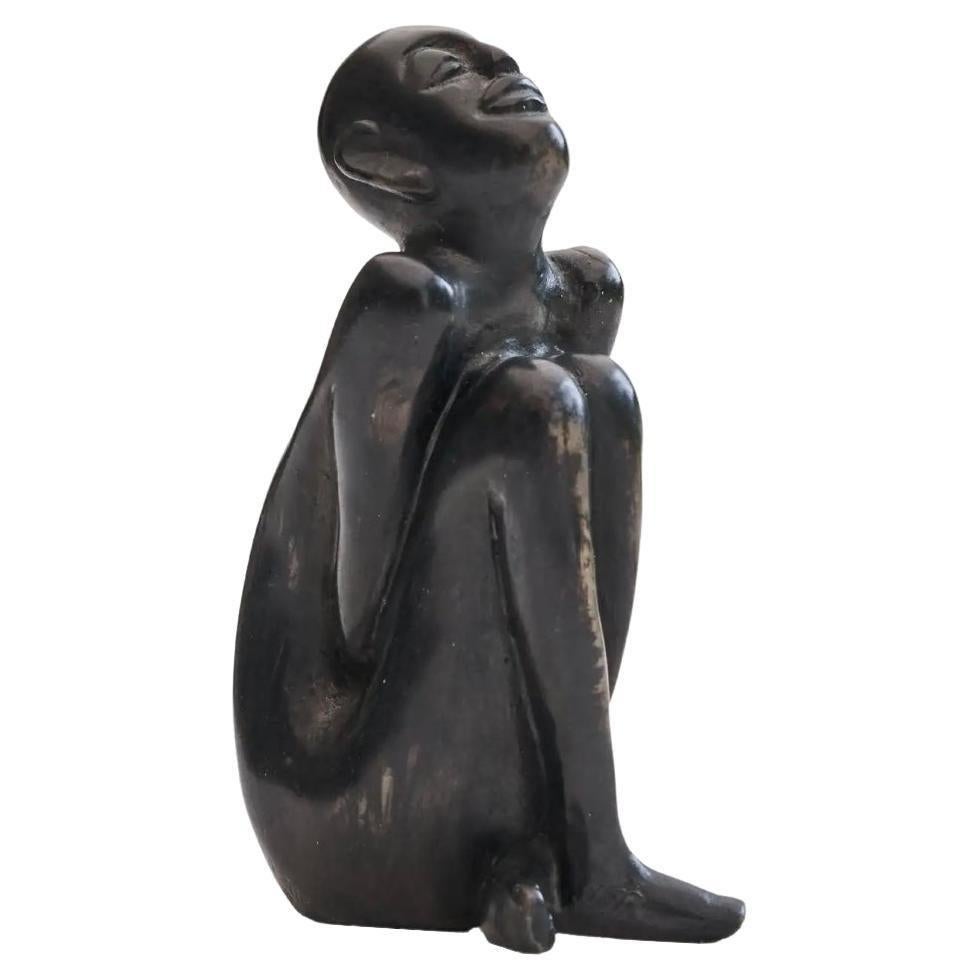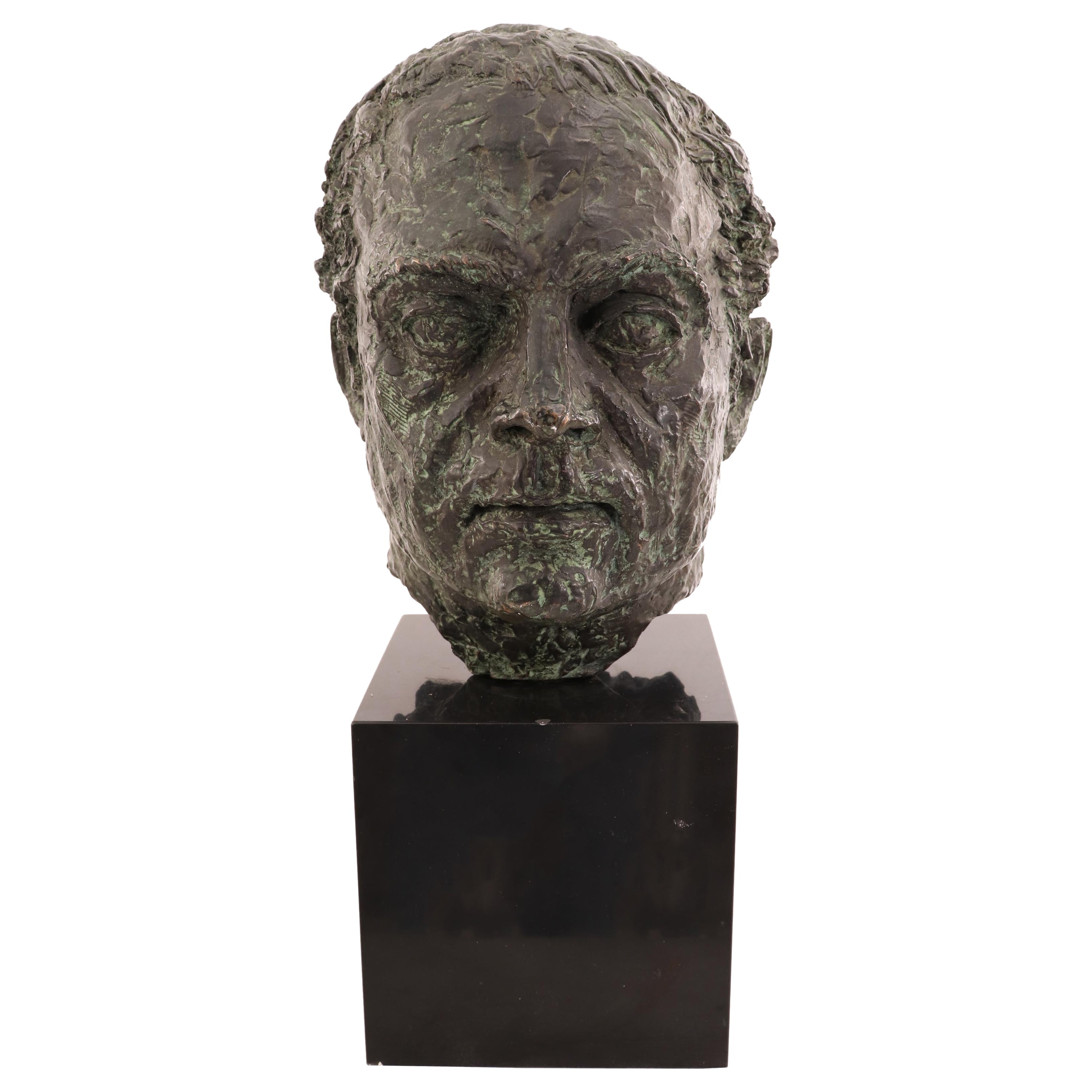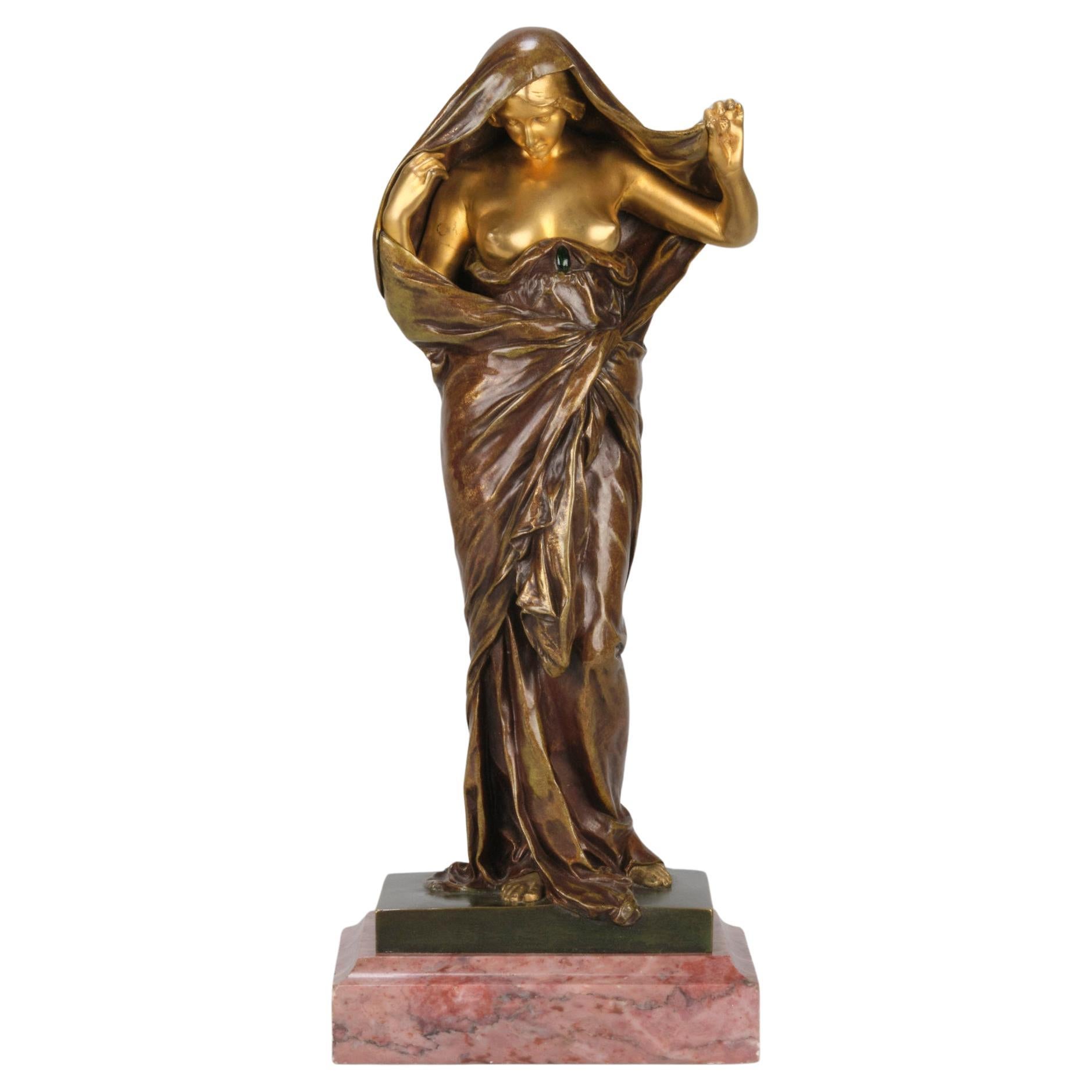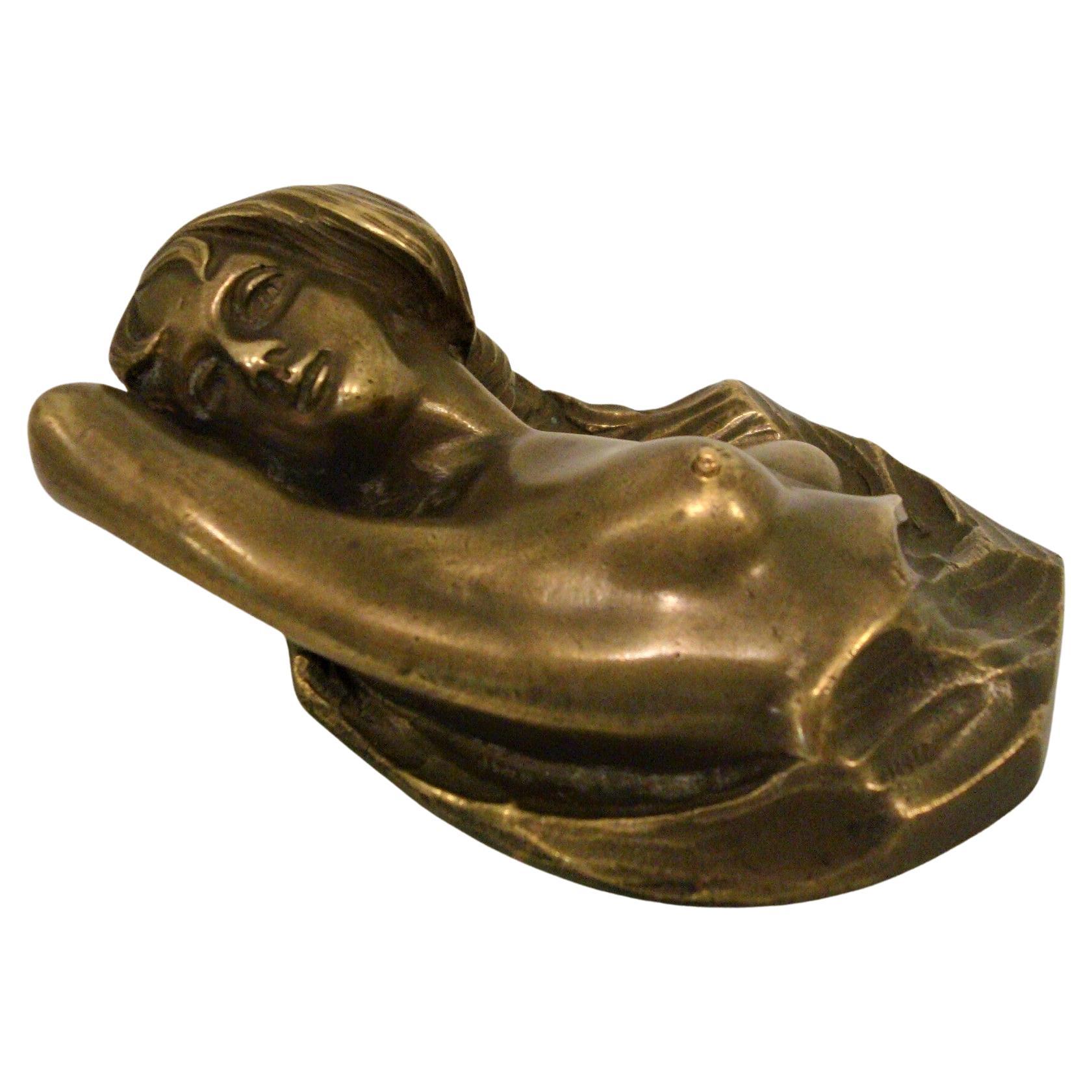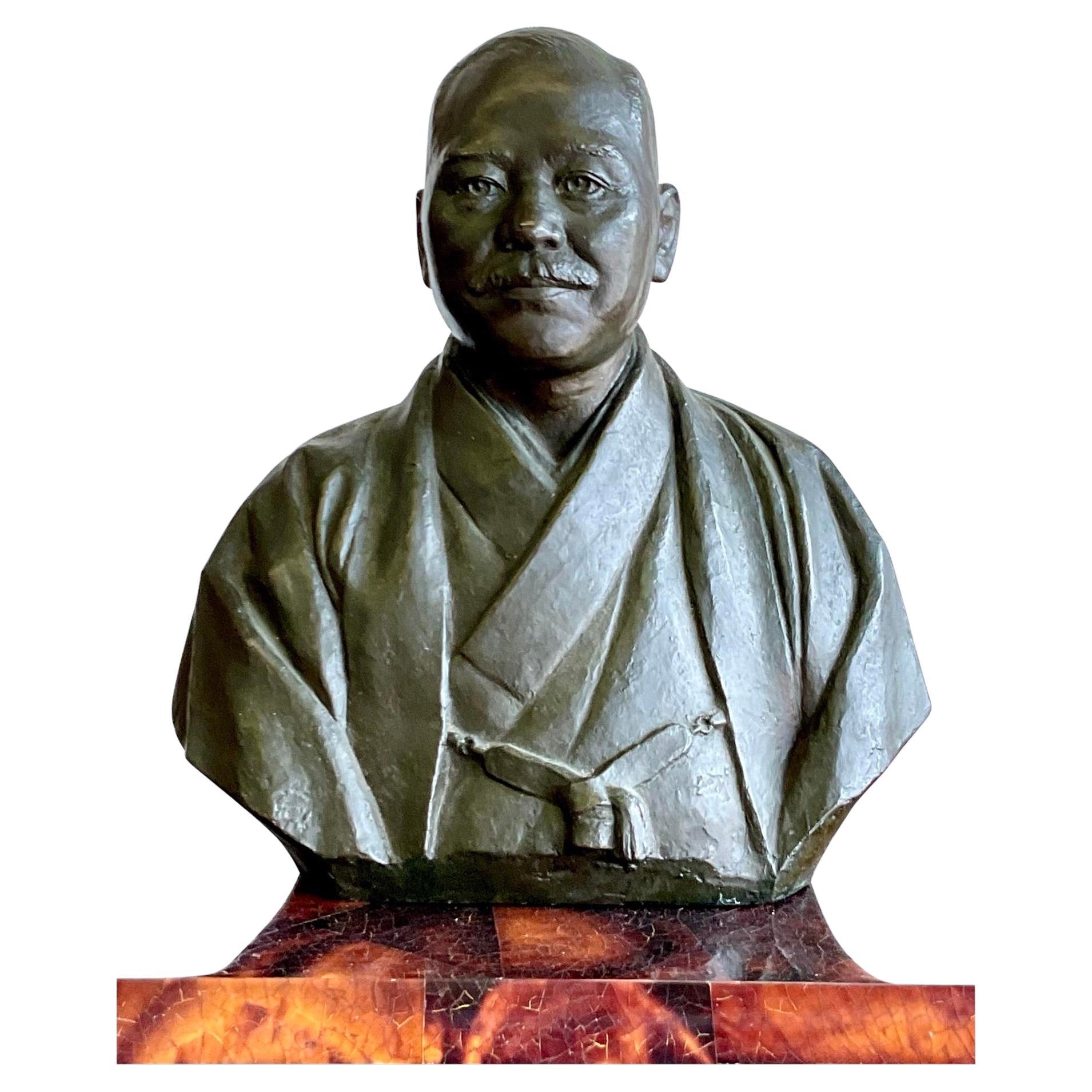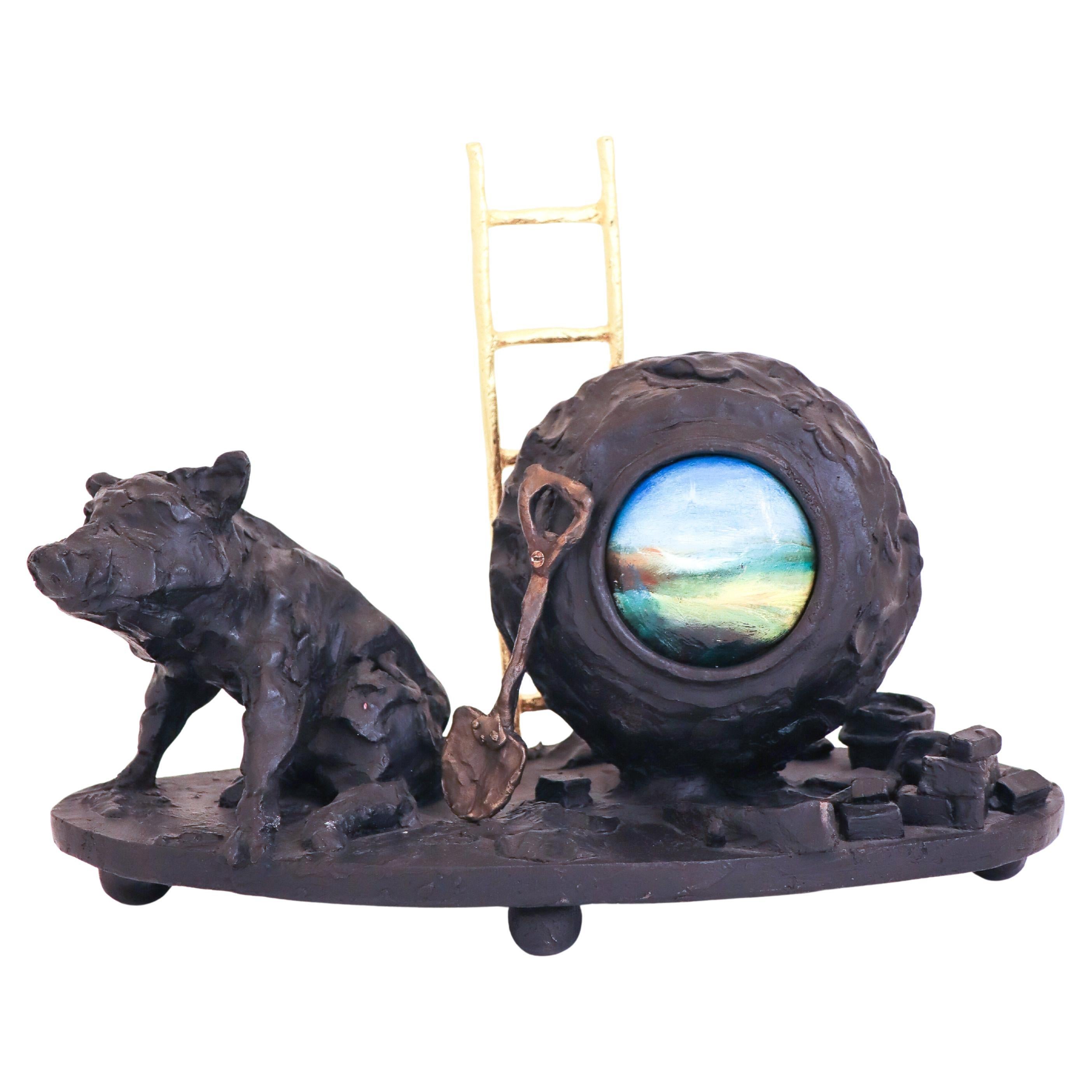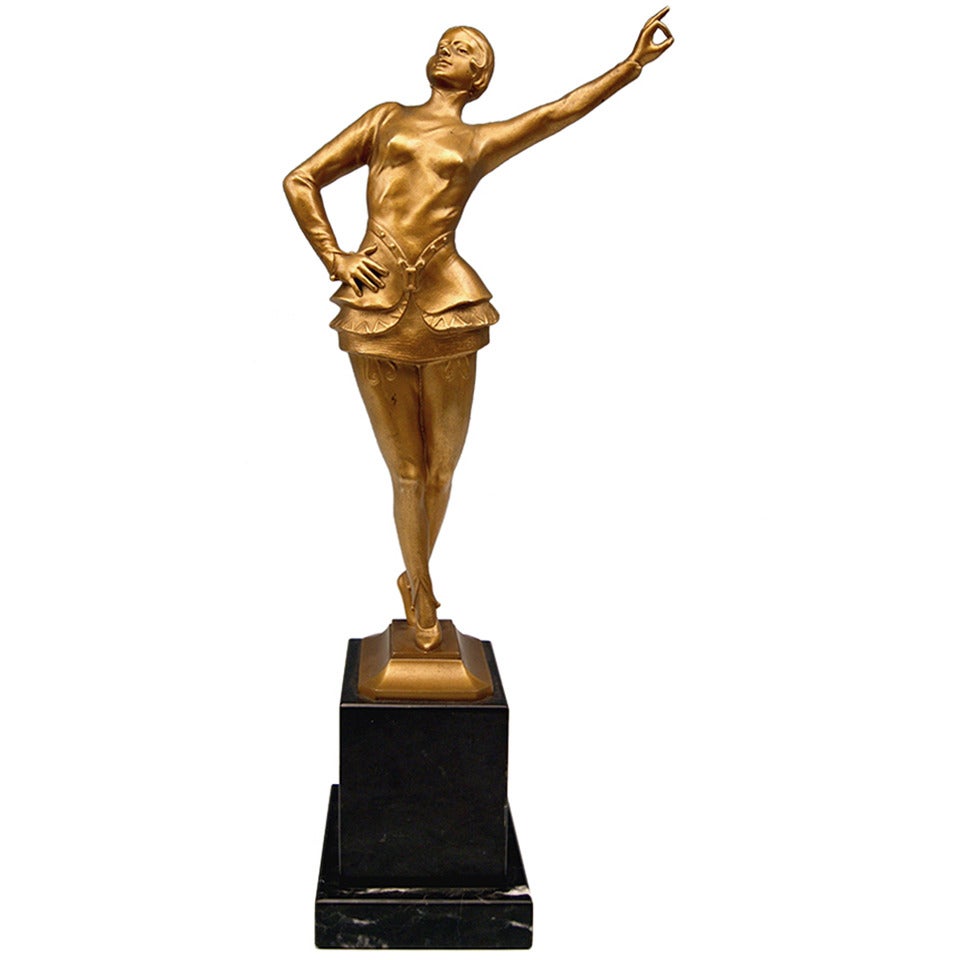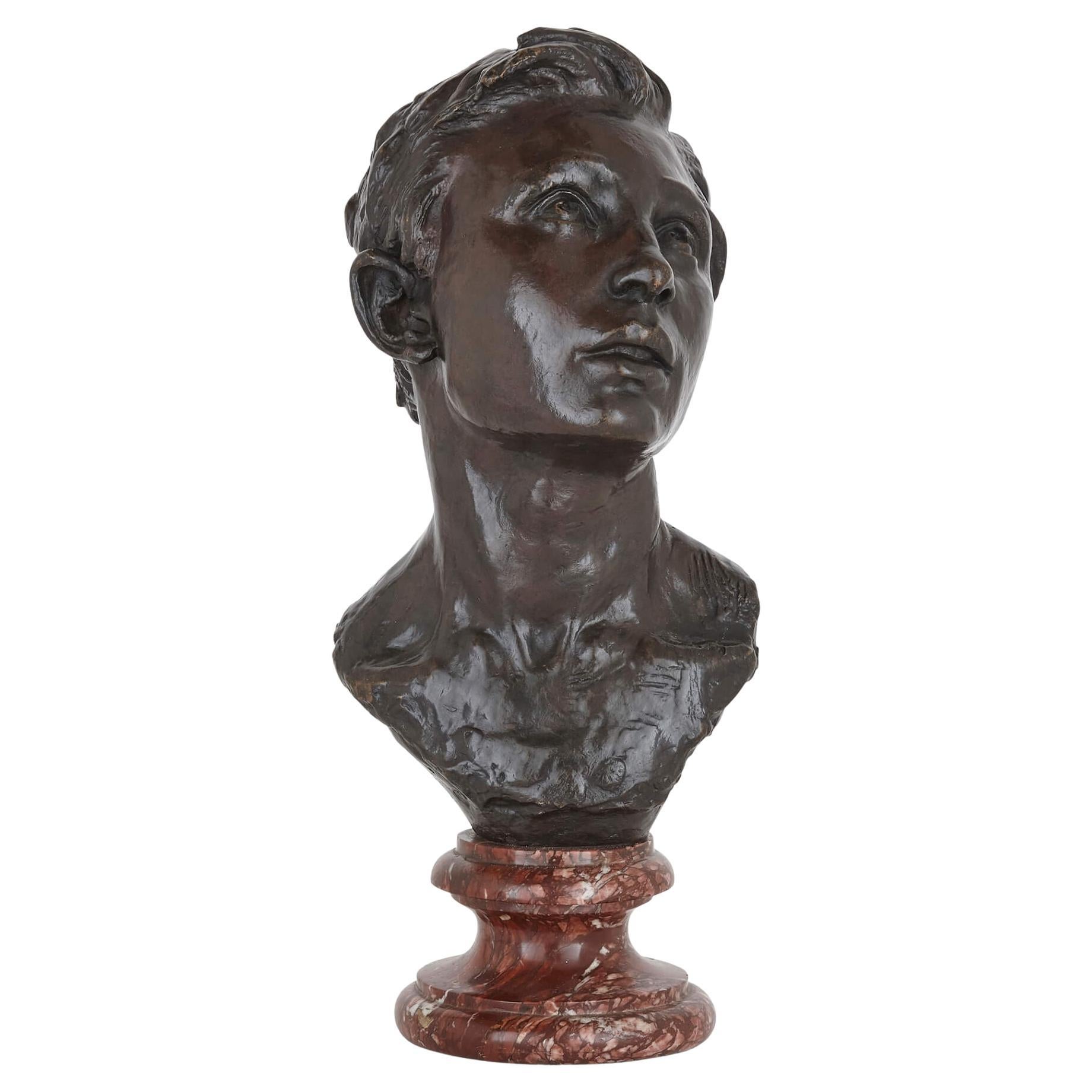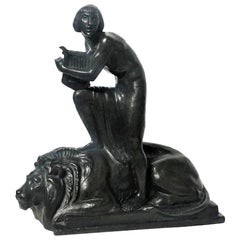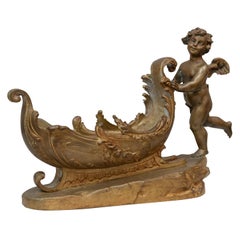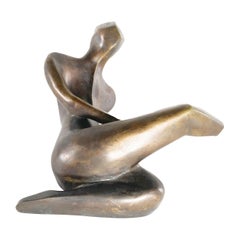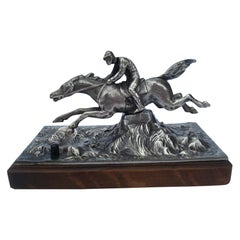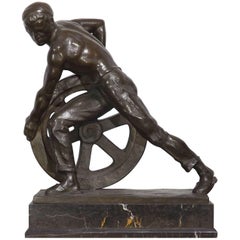
Bronze of a Man Pushing a Wheel by Ernst Seger
View Similar Items
1 of 10
Bronze of a Man Pushing a Wheel by Ernst Seger
About the Item
- Creator:Ernst Seger (Sculptor)
- Dimensions:Height: 20 in (50.8 cm)Width: 17.25 in (43.82 cm)Depth: 8 in (20.32 cm)
- Style:Jugendstil (Of the Period)
- Materials and Techniques:
- Place of Origin:
- Period:
- Date of Manufacture:Early 20th Century
- Condition:Wear consistent with age and use. Minor chips on marble base due to age.
- Seller Location:Charlevoix, MI
- Reference Number:Seller: 14-0591stDibs: LU162729054143
Authenticity Guarantee
In the unlikely event there’s an issue with an item’s authenticity, contact us within 1 year for a full refund. DetailsMoney-Back Guarantee
If your item is not as described, is damaged in transit, or does not arrive, contact us within 7 days for a full refund. Details24-Hour Cancellation
You have a 24-hour grace period in which to reconsider your purchase, with no questions asked.Vetted Professional Sellers
Our world-class sellers must adhere to strict standards for service and quality, maintaining the integrity of our listings.Price-Match Guarantee
If you find that a seller listed the same item for a lower price elsewhere, we’ll match it.Trusted Global Delivery
Our best-in-class carrier network provides specialized shipping options worldwide, including custom delivery.You May Also Like
Ernst Seger, David and Lion, German Art Deco Patinated Bronze Sculpture, c. 1920
By Ernst Seger
Located in New York, NY
Signed “E. Seger”.
Black patina.
Dimensions
Height: 8 inches (20cm)
Width: 7.5 inches (18.75cm)
Depth: 8.5 inches (21.25cm)
THE BIBLE STORY
Samuel 17:34-36
Originally, Saul would not allow David to fight Goliath (17:33). Saul’s reason was simply that Goliath would be stronger than David. David was young and he did not have the experience to fight such a capable enemy as Goliath. David was likely to die, and his death would benefit nobody.
Often people wrongly imagine that they are acting in faith (in other words, that they are trusting God). Really, they are acting in a foolish manner, as if the danger is not real. They are not trusting in God, but in their own thoughts, hopes and desires.
David’s reply to Saul shows us his attitudes. This reply explains clearly why David had offered to fight Goliath. In other words, it shows how David considered himself able to defeat Goliath.
Like many boys and young men in Israel, David had worked as a shepherd. That is, he looked after sheep. He was responsible to look after those sheep in every way. In particular, he had to protect them from wild animals.
Lions and bears are some of the fiercest large wild animals. They were common in Israel at the time of the Bible. They are much stronger than a man (see for example 1 Kings 13:24 and 2 Kings 2:24). Only the bravest and strongest men were able to kill a lion (Judges 14:5-6; 2 Samuel 23:20). However, David had killed both a lion and a bear. He had killed animals that were stronger than him.
David did not believe that the strongest man would win the fight. David had a close relationship with God; he was trusting God to rescue him (17:37). David was not pretending that there was no danger. However, God’s Holy Spirit was active in David’s life (16:13). By the power of his Holy Spirit, God had given David the faith (trust in God) to fight Goliath. Because David really was trusting God, there was no reason for him to be afraid of Goliath.
THE ARTIST
Ernst Seger (1865 1939), born in Neurode (Nowa Ruda, now Poland), studied sculpturing from 1884 at the Kunstschule in Breslau under Robert Härtel. From 1886 he worked in the Atelier of Christian Behrens, where he created the Eichendorff-Memorial for the Silezian City of Neisse. From 1893 to 1894 Seger stayed in Paris where he worked in the atelier of Auguste Rodin. However, Seger finally chose a ‘Jugenstill’ and a more ‘naturalistic’ or ‘Neuklassizismus’ style. His sculptures, modelled like the Greek antiques, were later greatly admired by the National Socialists.
At the end of 1894 Ernst Seger went back to Berlin, founded his own atelier and created the Kaiser Wilhelm I memorial for the Silesian City of Glatz. In 1897 Seger created the sculpture ‘Jugend’ (‘Youth’), which was displayed at the ‘Große Berliner Kunstausstellung’ in 1898, at the ‘Große Berliner Kunstausstellung’ in 1899, at the ‘Münchener Glaspalast Ausstellung’ in 1899 and at the ‘Münchener Glaspalast Ausstellung’ in 1908. As a sculptor Seger regarded this as his first relevant work, his breakthrough. A copy of the sculpture in bronze, 1.60 metres high, was placed in the ‘Scheitniger Park’ in Breslau (now Wroclaw). In 1898 Segers ‘Diana’, the Roman Goddess of the Hunt, the Moon and Childbirth, was unvealed in Park Szczytnicki, Breslau, Polen (earlier ‘Schneitniger Park’). Until 1945 the sculpture stayed in the Schneitniger Park, Breslau. This part of the park is still called ’Dianagarten’.
After the turn of the century the elegant female dancers and nudes by Seger gained great popularity. In 1905 Ernst Seger created -together with the sculptor Bernhard Sehring- the ‘Bismarck Brunnen’ (‘Bismarck Fountain’) in Breslau. This memorial-fountain (which still exists) represents the allegories ‘Kampf’ and ‘Sieg’ (‘Battle and Victory’). Seger’s ‘Verwundete Amazone’ (‘Wounded Amazon’), displayed at the Grosse Münchner Kunstausstellung in the Glaspalast in 1908, was placed in the garden of the ‘Kaufhauses Wertheim’ in Berlin. In the same year he was appointed as a professor. Seger’s marble sculpture ‘Kypris’, created in 1916, was placed in the Alten Nationalgalerie in Berlin. In 1925 the City of Berlin acquired his sculpture ‘Anbetung’ and placed it at the Johannaplatz. ‘Storchenbrunnen’ (‘Stork-fountain’), was placed in 1931 at the Adolf-Scheidt-Platz in Berlin. In 1935 the American newspaper publisher William Randolph Hearst bought Seger’s sleeping ‘Ganymede’.
During the Third Reich Ernst Seger was commissioned numerous Hitler busts...
Category
Vintage 1920s German Art Deco Figurative Sculptures
Materials
Bronze
Gilt Bronze Figure of a Cherub Pushing a Sleigh, circa 1900
Located in Petaluma, CA
This whimsical figure of a cherub pushing a sleigh was always in our Xmas window, but now we are selling it. It is artist signed "Kingsburger", German, circa 1900. A very lovely scul...
Category
Antique Early 1900s German Art Nouveau Figurative Sculptures
Materials
Bronze
$1,200 Sale Price
50% Off
Bronze Sculpture of a Man
Located in Queens, NY
Bronze Sculpture of a Man
Category
20th Century Unknown Modern Figurative Sculptures
Materials
Bronze
Equestrian Silvered Bronze Table Push Bell, 1900's
Located in Buenos Aires, Olivos
Equestrian silvered bronze table push bell.
Man riding a horse, or as soon in several british drawings, it can be a fox hunting scene. Classy way to signal y...
Category
Early 20th Century British Art Nouveau Animal Sculptures
Materials
Bronze
Bronze Sculpture of a Sitting Man
Located in Meer, VAN
Bronze Sculpture of a Sitting Man.
Wonderful little sculpture in bronze depicting a sitting man. Great pose and very well proportioned. Interesting from every point of view and a fu...
Category
Mid-20th Century Figurative Sculptures
Materials
Bronze
Bronze Bust of a Man's Head
Located in Queens, NY
Mid-century bronze bust of a man's head mounted on a black marble cube base. (Signed "H. Haas '71).
Category
20th Century American Mid-Century Modern Busts
Materials
Marble, Bronze
Recently Viewed
View AllMore Ways To Browse
Control Wheel
Brown Resin Table
Country Small Dining Tables
Entry Way Lights
Floor Flower
Large Pink Glass
Living Room Enables
Antique French Rugs
Antique Religious Items
Austrian Glass Pendant
Black Chinese Rug
Folk Art Figure
Lounge Chair With Table
Outdoor Table Base
Pink Chandelier Pendant
Polish Aluminum Table
Wood Dining Table Europe
1960s Wood Lounge Chairs
